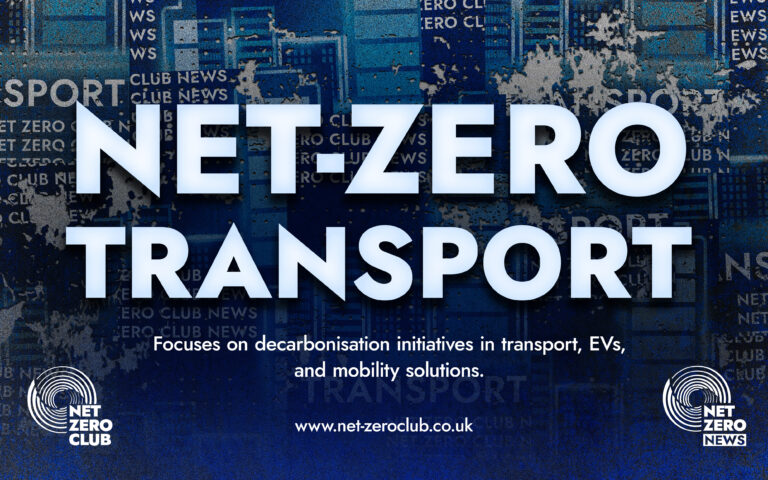HMRC EV Mileage Rates: Public vs Home Charging Explained

Welcome, Net Zero News readers,
As we march towards a more sustainable future, it’s crucial to stay informed about the evolving landscape of electric vehicle (EV) charging and reimbursement. In a significant move, HMRC has recently announced a split in mileage reimbursement rates for electric company cars, distinguishing between home and public charging. This change, effective from 1 September 2025, aims to address longstanding concerns within the fleet sector regarding the adequacy of the Advisory Electric Rates (AER).
For those navigating the electrification of their fleets, the new rates are essential knowledge. The home charging reimbursement rate is set at 8 pence per mile, while the rate for public charging will rise to 12 pence per mile. This is a notable increase from the current AER, which stands at just 7 pence per mile. The differentiation in rates acknowledges the increased costs associated with charging at public stations, which have been a point of contention for many fleet operators.
HMRC’s decision to split these rates has come after years of feedback from the fleet sector, which has consistently highlighted that the AER did not adequately cover the real costs incurred by drivers when charging their vehicles. Now, fleets have the option to utilise a higher reimbursement amount if they can demonstrate that the actual fuel cost per mile exceeds the new advisory rates. This flexibility is critical for businesses striving to manage their operational costs effectively while transitioning to electric vehicles.
The new AER figures are based on an EV efficiency rate of 3.59 miles per kilowatt-hour (mpkWh), weighted by car sales, and reflect current electricity costs for both domestic energy and public charging stations, including both slow and fast chargers (those less than 50kW). The breakdown of these calculations is crucial for understanding how HMRC arrived at these new rates.
Understanding the New Advisory Electric Rates
Here is a detailed look at the advisory electric rates for home and public charging:
| Charging Location | Electrical Efficiency (miles per kilowatt-hour) | Electricity Cost per Kilowatt-hour (pence) | Rate per Mile (pence) |
|---|---|---|---|
| Home Charger | 3.59 | 27.04 | 8 |
| Public Charger | 3.59 | 51.00 | 12 |
The home charging rate is grounded in the domestic electricity cost per kilowatt-hour, as published annually by the Department for Energy Security and Net Zero. This rate has been updated with the latest estimates from the Office for National Statistics, ensuring that it reflects the current realities of energy costs.
On the other hand, the public charging rate is derived from the ‘slow or fast public charge cost per kilowatt-hour’ figures sourced from the Zapmap public charging price index. This index is updated monthly, providing a real-time snapshot of the costs associated with charging at public stations.
Advisory Fuel Rates Update
In addition to the changes in electric vehicle rates, HMRC has also published the latest Advisory Fuel Rates (AFRs) for the upcoming quarter. While petrol rates have remained unchanged from the previous quarter, there have been adjustments to the diesel rates. The reimbursement rate for smaller-engined diesels (1600cc or less) has increased from 11 to 12 pence per mile, and the rate for larger engines (over 2000cc) has risen by a penny, moving from 17 to 18 pence per mile.
These adjustments come on the heels of a notable increase in diesel pump prices, which rose nearly 2 pence per litre in July, as reported by the RAC. It’s essential for fleet operators to stay updated on these rates, as they directly impact operational budgeting and fuel expense management.
HMRC’s AFR figures are derived from the latest petrol and diesel prices as reported by the Department for Energy Security and Net Zero, while the LPG average figures are sourced from the Automobile Association.
It’s worth noting that the previous rates can still be utilised for up to one month following the introduction of the new rates, allowing for a smoother transition for businesses adjusting their reimbursement practices.
Current Advisory Fuel Rates Breakdown
For those interested, here’s a comprehensive view of the updated Advisory Fuel Rates:
| Engine Size | Petrol (pence per mile) | LPG (pence per mile) |
|---|---|---|
| 1400cc or less | 12 (12) | 11 (11) |
| 1401cc to 2000cc | 14 (14) | 13 (13) |
| Over 2000cc | 22 (22) | 21 (21) |
| Engine Size | Diesel (pence per mile) |
|---|---|
| 1600cc or less | 12 (11) |
| 1601cc to 2000cc | 13 (13) |
| Over 2000cc | 18 (17) |
As the landscape of electric vehicle charging evolves, it is imperative for fleet operators, drivers, and businesses to stay informed and adapt to these changes. The introduction of separate reimbursement rates for home and public charging is a step in the right direction, promoting transparency and fairness in the cost structure associated with electric vehicles.
In conclusion, the latest updates from HMRC regarding AERs and AFRs signify a growing recognition of the unique challenges faced by electric vehicle users and fleet operators. As we continue to work towards our net-zero goals, these adjustments are not just bureaucratic changes; they represent a vital shift in how we think about transportation costs and sustainability.
Stay tuned to Net Zero News for more insights and updates as we navigate this exciting transition towards a greener future!

 Got net-zero news, project updates, or product launches to share?
Got net-zero news, project updates, or product launches to share? 

